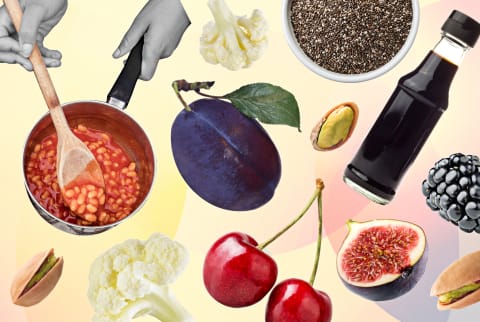If you know that gluten is a protein found in wheat, barley, and rye, then avoiding those three grains seems obvious. But what about the sauces, packaged goods, and other dishes that may contain hidden sources of gluten? Many people assume all grains are off-limits—but that’s not the case, a number of grains are naturally gluten-free. That said, it’s important to check food labels. If the grains were processed in facilities that contain gluten, it’s possible for cross-contamination to occur. Without cross-contamination, though, these seven grains are generally free of gluten and safe to eat for people with allergies or intolerances. Most of them can be made into gluten-free bread or gluten-free flour for all your baking needs. Looking for the gluten-free label on plant-based proteins is also important, Feller says, “while also noting if the item was processed in a facility that processes gluten.” This eliminates the possibility of cross-contamination. As long as you’ve checked all of the labels, these six animal- and plant-based proteins should be gluten-free: In their raw, unprocessed form, these are just 30+ of the many, many fruits and vegetables that are gluten-free: Keep an eye out for flavoring agents and sweeteners, as well, as those may contain gluten. These seven dairy products are generally gluten-free, but look for the gluten-free certification label to double-check. Just like you should with all of the foods on this list, be sure to check the labels of any condiments you may buy. Registered dietitian and nutritionist Isabel Smith, R.D., CDN, says to look out for “anything with the word malt in it, caramel coloring, baking powder, and citric acid, which is sometimes made with fermented wheat.” If you’re looking to flavor your meal, Smith suggests using fresh or dried herbs, olive oil, salt, pepper, citrus juice, and tomatoes or tomato sauce. Additionally, any of these four condiments are generally gluten-free: While they are naturally gluten-free, Cording says the foods they’re consumed with might not be, so you also have to be mindful of cross-contamination. For example, “nut and seed butters don’t contain gluten, but you have to be careful not to dip a knife that just touched wheat bread into the jar.” When cross-contamination and ingredient lists have been taken into account, this list of oils and fats should be safe on a gluten-free diet: Just be sure to follow these guidelines to help select a truly gluten-free option. Also, remember to always double-check your food labels, especially if you have a severe allergy or intolerance to gluten.




